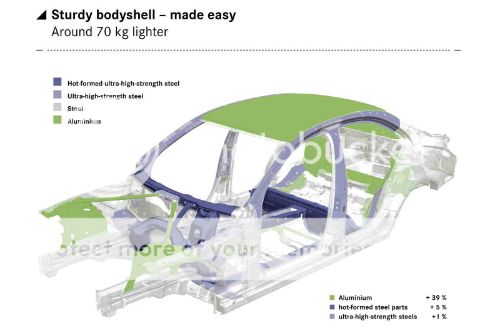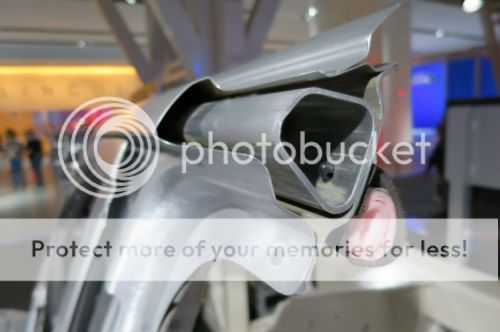Is the Industry Embracing the Aluminium Revolution?
Add bookmark
With a 10% reduction in vehicle weight achieving a 3-4% fuel saving, or as much as 5-7% if the power train is also downsized, it was only a matter of time before an OEM took the plunge with a radical approach to weight reduction on a high volume model.
At the 2014 North American International Auto Show in Detroit, Ford unveiled the production version of the previous years Atlas F150 prototype. This time around the F150 stole the show, not only because it’s America’s favorite mode of transport; F-Series sales exceed that of all six Ford SUV models (681,802) and almost equaled the eight Ford passenger cars (793,279), but notably this American stalwart now sported an all aluminium cab and load body.
Luxury car makers such as Jaguar have been using aluminium for decades, and even conservative Mercedes Benz has 'broken the mould' by introducing a significant percentage of light weight aluminium body panels and structural components in the company’s smallest rear-drive model, the W205.

Image credit: www.autocar.co.uk
The W205’s aluminium-steel hybrid architecture incorporates 24 per cent aluminium (by weight), achieving a 70kg weight saving over the outgoing W204. Crucial structures such as the front and rear cast aluminium suspension mounts, and the new cast aluminium rear axle mount, replace the current C-class's steel sub-assemblies. The new components are nearly 40 per cent lighter than 13 different steel pressings they replace.
A single-piece cast aluminium front suspension tower replaces the three-part steel assembly used on the W204. Here, the cast suspension mounts are bonded, riveted and screwed to the adjacent steel pressings with a layer of adhesive acting as a barrier to prevent galvanic corrosion that would normally take place between steel and aluminium.
Despite the sound engineering reasoning behind the increased use of aluminium in premium brand, high ticket vehicles, a question still surrounds the customer acceptance of aluminium in a high volume utility vehicle such as the F150. This sector of the market is traditionally driven by durability and cost, both of which are under scrutiny with the use of aluminium; in particular repair costs and the affect on insurance premiums.
With one in every 20 vehicles sold in the US last year an F-Series pickup, which netted Ford an estimated profit of $10,000 per F-150, the company has been careful to dispel potential customer concerns: Stating on the Ford consumer site’s 2015 F-150 page that; "repair and insurance costs are expected to be competitive with the previous F-150." But is this really what potential customers will experience?
Cost of aluminium components compared to steel equivalents
In a recent study, online publication "Car and driver", conducted a survey into the cost of F150 body parts and found:
• A replacement 2004 F-150 hood, the first year this panel was produced in aluminum as standard, was priced at $1092.72
• The aluminum hoods for 2009–14 F-150s are slightly cheaper, at $880 (Possibly this cost reduction can be attributed to process improvements?)
• The steel equivalent for the older 2003 F-150 cost $647
It’s not at all unexpected that the aluminium components are more expensive. A study on process cost modeling by the Massachusetts Institute of Technology concluded that:
• In raw material costs, aluminium is three times more expensive than steel
• Aluminium is twice as expensive to convert
• Assembly costs are between 20 to 30% higher for aluminium
• In total an aluminium structure is estimated to be 60 to 80% more expensive to produce
Complex F150 aluminium door assembly

Image credit: www.wot.motortrend.com
With all indications pointing to aluminum body parts being more costly than the steel equivalents, could the labour cost possibly offset the overall cost of repair?
The cost of repairing aluminium body panels
Currently most body repair shops merely replace dented or crumpled aluminum panels, since repairing deformed aluminium is time consuming (therefore expensive) and requires highly skilled technicians.
By way of example: Extreme damage to either the cab or the load body would probably result in replacement not repair, as welding-in aluminum patch panels requires an expensive clean room to prevent contamination of the alloy. And even if the repair shop did have the facility many manufacturers wouldn’t provide replacement aluminum body sections, as a precaution to prevent contaminated repairs: Aluminum contamination accelerates corrosion which can impact the long term quality of repair. Furthermore the F-150′s panels are riveted and glued in place, and with the adhesive costing around $60 per packet, this also adds significantly to the cost of repair.
Based on these findings, and common sense, it would fit that insurance premiums would have to increase significantly. Currently, due to the limited use of aluminium in vehicle construction, statistics are somewhat sketchy, but in an interview with Car and Driver Dr. Robert Hartwig, President and Economist at the Insurance Information Institute offered a surprising insight.
In the case of a high-volume vehicle such as the F-150, he believes an aluminum-intensive construction would have a minimal impact on owners’ insurance premiums. This, due to the fact that the portion of most drivers’ insurance premiums allocated to collision repair is quite small; the major contribution is allocated to liability coverage. With comprehensive and collision typically making up about a third of the premium, any increase in repair costs would probably have an insignificant affect on the overall premium rates.
[Editor's Note: Take a look at the issues regarding repair for composite materials in Part 3 of our series on lightweight materials]
The future of aluminium in automotive body construction
Despite the use of aluminum in cars and light trucks tripling in North America and Europe over the past two to three decades, this trend may very well be transient: Similar to that followed by the aerospace industry.
Even though many manufacturers are turning to aluminium to meet emissions regulations through weight reduction, there are those, such as BMW, that are looking to hurdle this "interim" development through the use of high tech solutions such as reinforced plastic composites.
Whether the prediction of Richard B. Evans, president of the Aluminum Association, "that within 10 to 15 years steel will represent less than 50% of automotive structures" will become a reality, only time will tell.
Sources:
Aluminum-body 2015 Ford F-150 - www.extremetech.com (Bill Howard)
Insurance and repair costs of the F series – Car and driver (Alexander Stoklosa)
Mercedes C-class technical details – Autocar (Hilton Holloway)
Peter Els is a technical writer for Automotive IQ






















